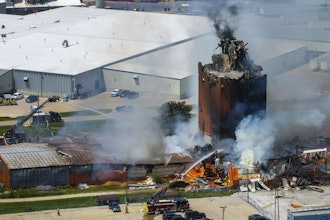
The U.S. Bureau of Labor Statistics reported that a worker died every 111 minutes from a work-related injury in 2020. Preventing workplace tragedies is critically important for businesses because it not only saves lives, but reduces the legal and reputational fallout that inevitably occurs. Mitigation efforts almost always include training as a key method to improve workplace safety.
How companies successfully train their employees in doing their work safely varies widely, to say the least. So let us take an evidence-based look at some best-practice, generalized safety training methods.
The Power of Dialogue
Traditionally, safety training and education is often delivered via a presentation, typically ‘death by PowerPoint,’ which yields variable results. By contrast, most contemporary educators acknowledge that information is better retained when it is learned in an activity-focused setting. For instance, researchers have found that interactive demonstrations are more effective in promoting behavioral change than classical written instructions, lectures, or videos.
Safety talks, where participation is encouraged, create an ideal environment for learning as well as maintaining existing knowledge and skills. These types of training environments, as opposed to presentations or lectures, involve active participation where learners are free to interact with the safety training material, and communicate with each other and their trainer. This can either be through discussion and asking targeted questions, or through more direct interaction such as hands-on explanations and demonstrations.
Engaging the Participant
It is a common experience for many instructors that some participants do not want to be actively involved in a classroom scenario, and this can present an obstacle to a successful educational experience for all present. A variety of reasons can impact how engaged an employee is in their training - which includes cultural, social, and literacy issues, or even the fear of being stigmatized or labelled by training peers.
One engagement strategy involves safety educators acting as co-learners and performing the role of active participants in the learning process. This helps to facilitate the discovery of new knowledge or the exploration of existing information. The ability to successfully do so comes down to the trainer’s own skill, level of preparation, and ability to read the social climate of a group and involve participants.
One of the more frequent barriers to engagement is comprehension. Often when a participant reads or is instructed about safety, they may consider what is being presented, but may not easily integrate this new knowledge into their existing thoughts. This has downstream effects, as poorly integrated knowledge cannot be translated well into actions or behavior
Conversation is one approach that both improves comprehension and engagement. Talking through information encourages the participant to both consider and also engage more deeply with the content. This is likely because conversation requires information to be maintained and processed in the participant’s working memory, which may contribute to the formation of stronger contextual associations in long-term memory storage.
Verbalization recruits multiple brain systems, such as those responsible for memory retrieval and consolidation, planning, and language. For example, consider how a production manager might briefly describe an everyday safety procedure to a colleague and generate a discussion. It is thought that by recruiting many different mental processes, an active dialogue can assist in integrating new knowledge into long-term memory while modifying and strengthening existing knowledge.
Discussions between colleagues can bring together numerous approaches and may also challenge a participant’s preconceived ideas – helping them to consider something from a different perspective. For instance, contrasting illustrations of safe versus unsafe work practices, is a highly effective technique in safety education.
How should companies in a manufacturing environment successfully implement safety conversations? Here are five important steps to consider:
- Be prepared. Effective education involves communicating information that is clear, concise, unambiguous, and accurate. Depending on the topic, instructors may want to focus on a particular section rather than addressing the entire subject. This helps prevent information overload. It is also important to have some prepared questions in place that might provoke a good discussion afterwards.
- Consider group size and composition. Smaller groups provide a more comfortable setting for people to participate, and people learn from each other. Depending on the topic, trainers may want to consider grouping participants who have similar jobs, work locations, or work experience together. Don’t forget to include management in relevant training sessions. Research has also shown that training delivered alongside management is highly effective in terms of positive workplace change and safety performance.
- Encourage exploration and discussion. Adult learners tend to be self-directed and oriented toward personal relevance and value. To tap into this mindset, trainers should try and relate how the chosen safety topic will apply to the participants’ work situation. This usually involves formulating questions or discussion points to try and get the training group to launch into some form of discussion. Larger groups are often harder to facilitate, so breaking up into smaller groups may create an environment where people feel more comfortable getting involved in the discussion. Open-ended discussion at relevant points in the training course must be encouraged. Employees may need the freedom to engage in the learning process and relate what is being learned to both existing knowledge, experience, and their current work situations.
- Try different learning tools and styles. The goal of safety talks is to blend information with experience, whether that is through discussion or hands-on demonstration. Roleplay, case studies, and practice in problem-solving have a positive influence on workers recognising workplace hazards. Consider setting performance goals at the beginning of training sessions as these have been shown to be an effective approach.
- Have fun and enjoy yourself. Health and safety training can be viewed by workers, and occasionally, educators, as obstructive, tedious, irrelevant, and boring. Encouraging participation and allowing for organic discussion can be great for morale.
Training is an ongoing commitment to the success and safety of a company and its most important asset, the people that work there. How safety training is delivered goes a long way to establishing the culture of safety in a company.






















